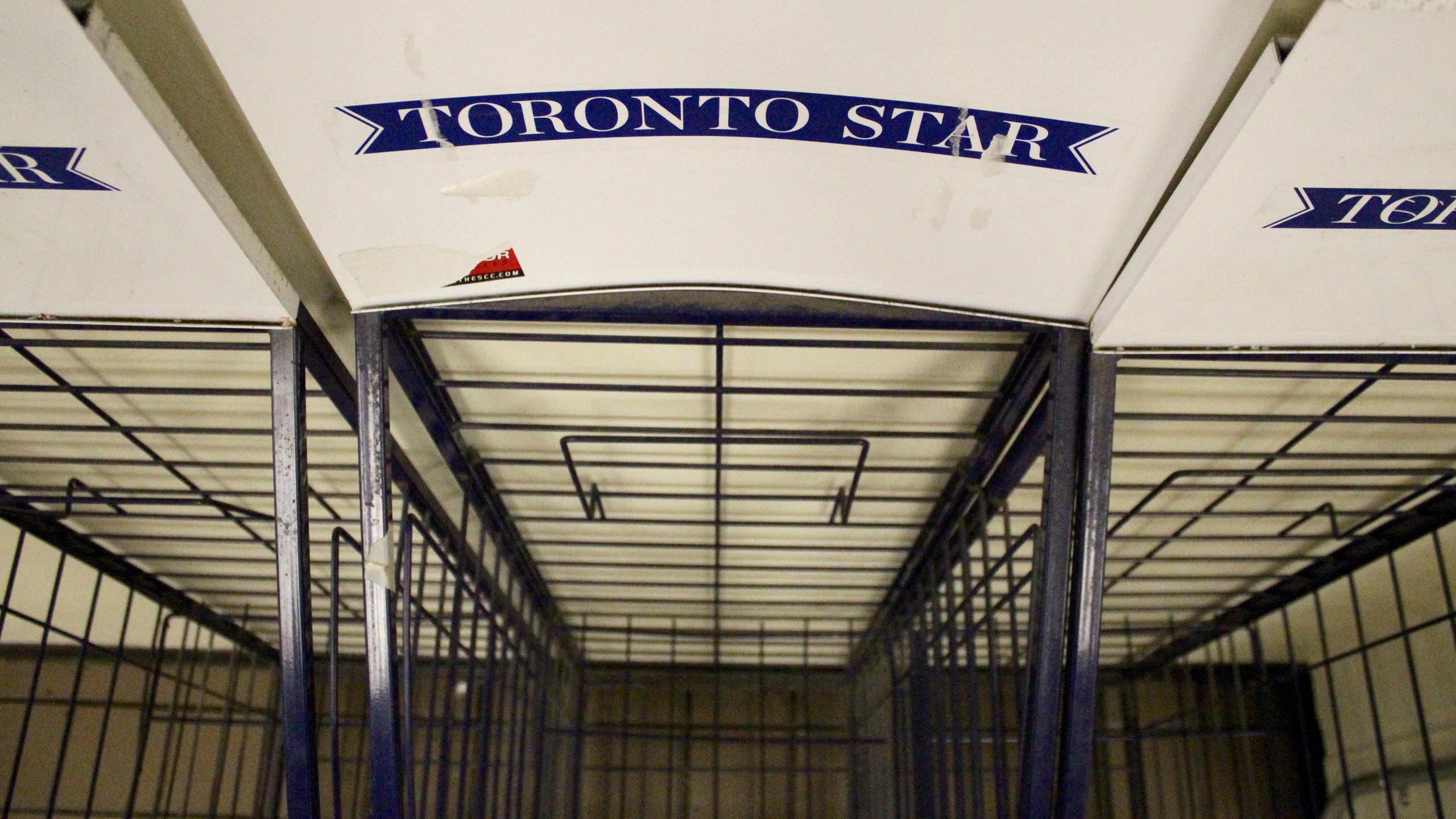By Maggie Macintosh
The Toronto Star stands across Ryerson University’s campus are empty. And according to the newspaper’s spokesperson, they are going to stay that way.
Hundreds of free copies of Canada’s largest daily were delivered to Ryerson University every day until July. The Star told The Eye they cancelled their free delivery program to post-secondary institutes over the summer in order to reduce the company’s expenses.
“It’s a program that we would like to be able to continue, but… media organizations are facing challenging times,” said Bob Hepburn, director of communications at the Star.
Subscriber revenue increased by five per cent during the second quarter of 2018—a period from April 1 to June 30—but the Star’s print advertising revenues declined 19 per cent and flyer distribution revenues declined 15 per cent, according to a press release dated Aug. 1.
“While print advertising trends remain challenging, we saw trends improve in the local category and we continue to be pleased with the stability we are seeing in subscriber revenue,” the release states.
Torstar Corp. ended the second quarter with $49.4 million of cash and cash equivalents.
Neither the Star nor the university could confirm the exact number of free copies Ryerson received. There were “several hundred,” Hepburn said.
Stacks of free Star newspapers used to fill blue stands in Ryerson’s library, Victoria Building, Ted Rogers School of Management, Rogers Communications Centre and the campus store.
The free delivery program that was slashed over the summer was in place for all universities and community colleges in Toronto. Up until July, Hepburn said Torstar Corp. also delivered free StarMetro newspapers to post-secondary institutions in Vancouver, Edmonton, Calgary and Halifax.
“This was not a step that we took lightly. It was costing us money to provide these free copies to these institutions,” Hepburn said.
The Eye’s archives show Star deliveries to Ryerson started in March 2001. Representatives from the Star and Ryerson signed a Campus Readership Program Agreement, a document that outlines the university’s acceptance of complimentary Star newspapers, on Feb. 23, 2001.
Prior to the agreement, the university’s policies did not allow any external publications to be distributed on campus.
The Eye campaigned against the deal at the time—alongside other student newspapers across Ontario—over concerns allowing free dailies on campus would threaten student media circulation and advertising revenue.
“It seems like people think that journalism—thoughtful, rigorous, edited, carefully-produced journalism—should just be free”
“The Eyeopener, Ryerson’s independent media voice for the past 34 years and one of the country’s best training grounds for student journalists, is fighting for survival,” a media release published by The Eye in early 2001 states. The Eye collected nearly 300 student signatures in protest of their cause, “Asking the Star not to turn our campus into a glorified newsstand for the sake of increasing circulation figures.”
Lisa Taylor, the undergraduate program director for the Ryerson School of Journalism, said the free deliveries provided all students—journalism, business management, engineering and midwifery alike—with a reliable news source on campus.
“In a world where it seems like people are backsliding in terms of their understanding of what journalists do, it was helpful to have a really reliable source of news and information for students,” she said.
However, Taylor said that if the Star needs to redirect resources in order to fund their investigations—especially Star-Ryerson School of Journalism investigations—she’d rather see it go there.
Although she said Ryerson losing the convenience of the Star on campus is sad, Taylor noted that giving away free newspapers causes other problems.
“Between free newspapers and the ubiquity of the internet, somewhere along the line it seems like people think that journalism—thoughtful, rigorous, edited, carefully-produced journalism—should just be free,” she said.
“And maybe this is the reminder that people need, that it costs to put those papers in newsstands.”











Leave a Reply